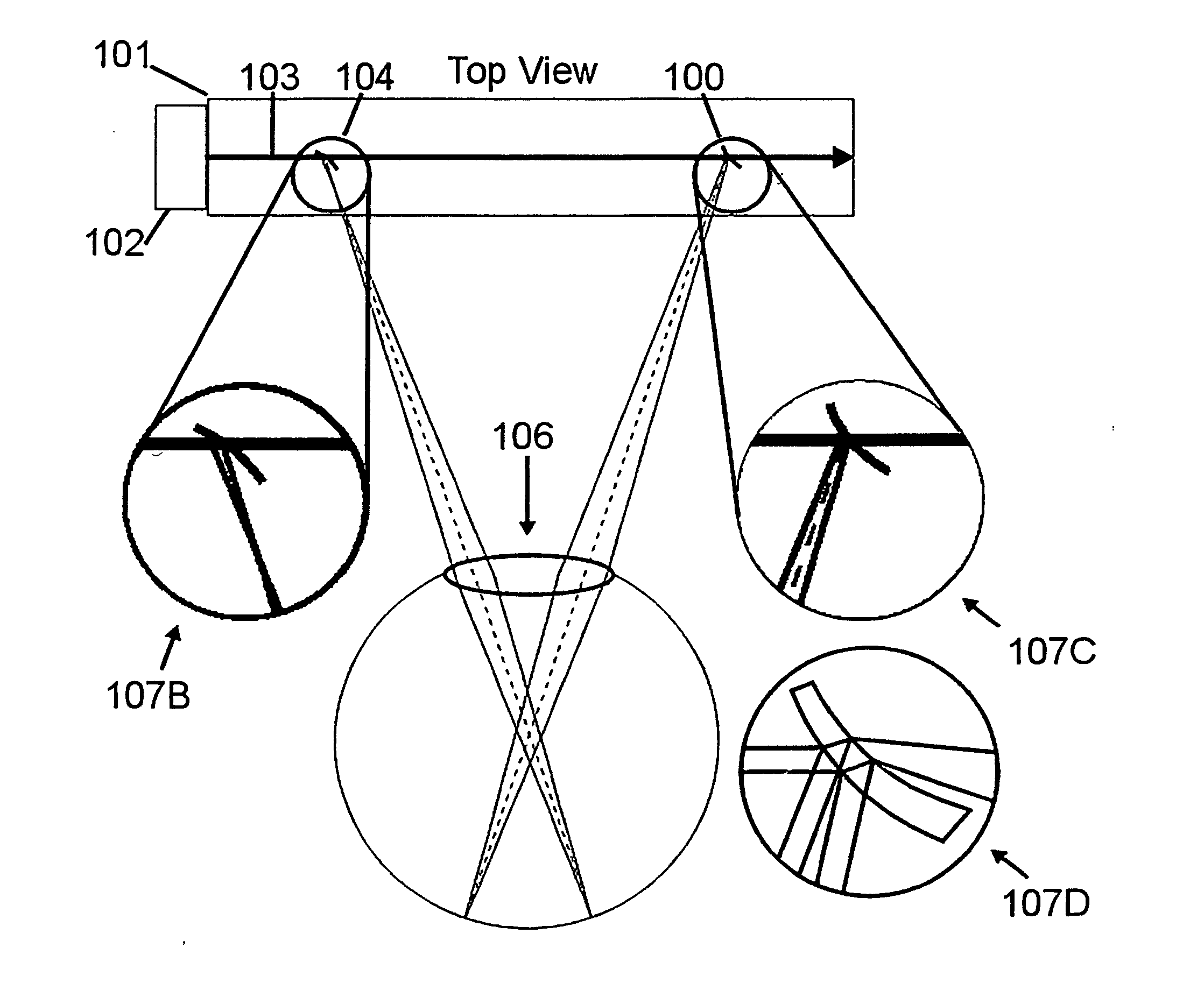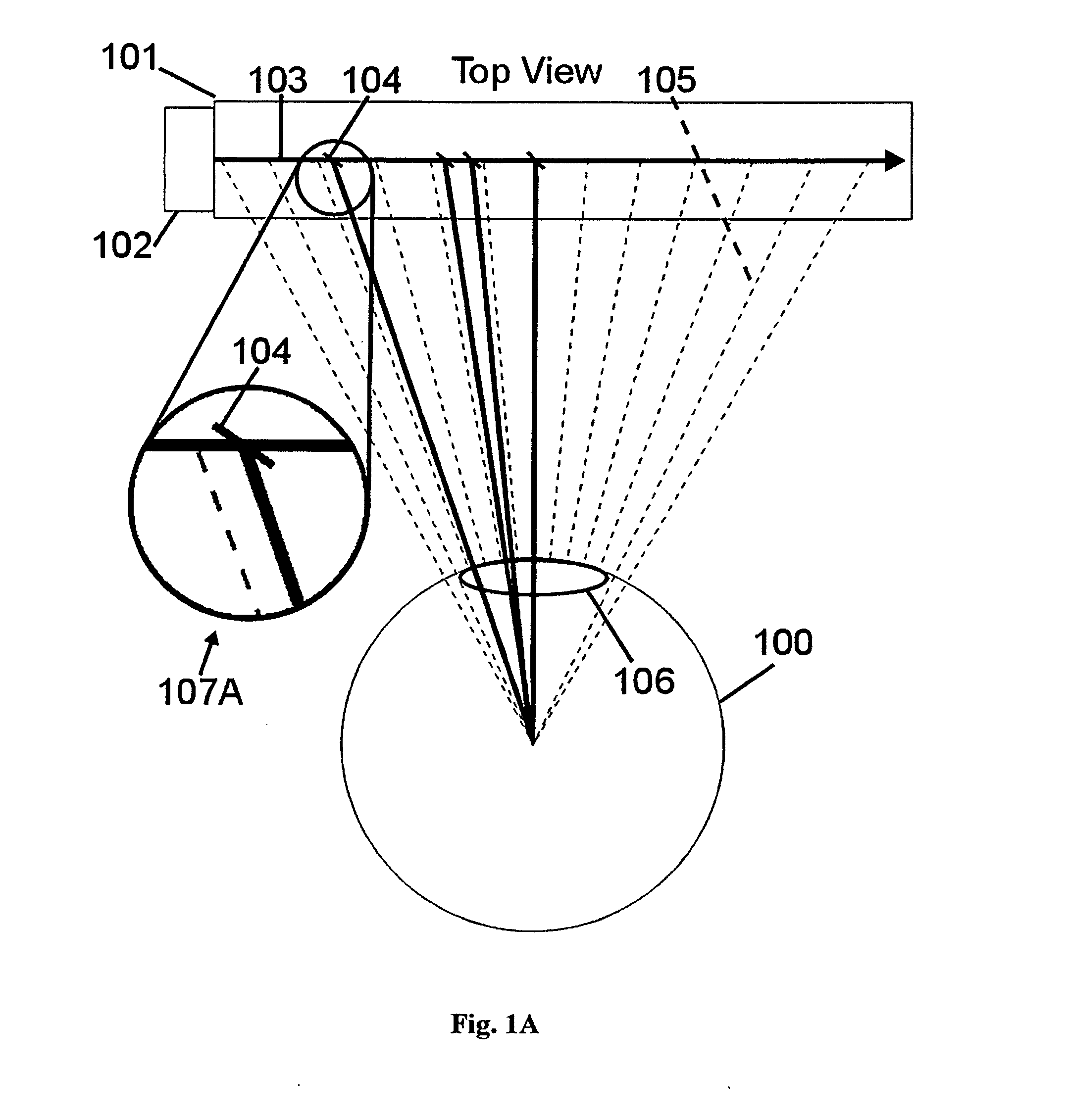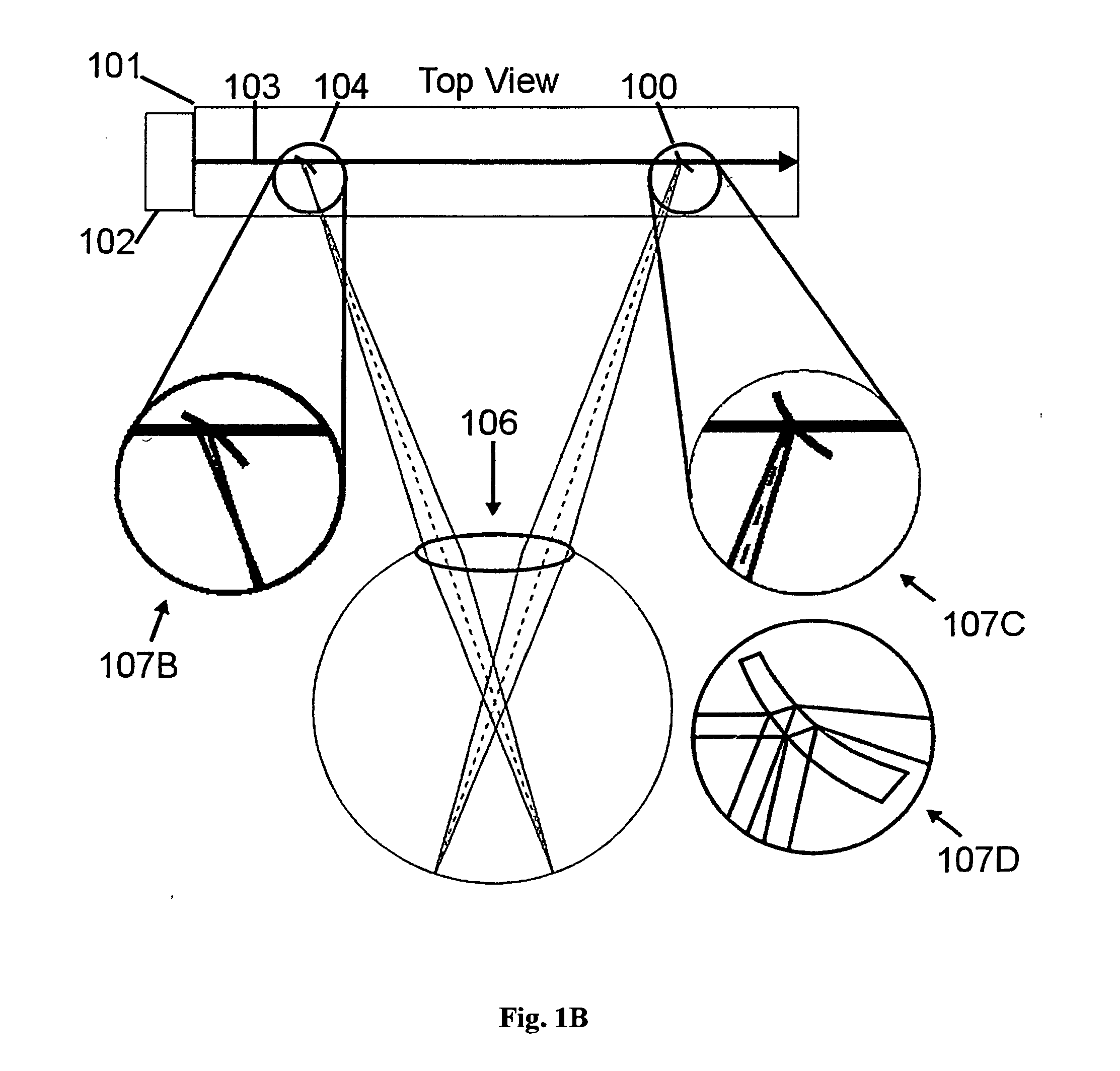For example, the current state of the art in display technology still falls short of providing image displays (from
large screen televisions to miniature worn displays; e.g., image displaying glasses) with true and accurate
depth perception, natural (wide)
field of view (FOV) and control of overlaid images.
Otherwise, a head mounted
projector would normally be too close for the eye to bring to a focus on the
retina.
This external
accommodation for the eye's limited diopters of focusing power for very near isotropic-
pixel image sources and the other hardware typically required in directing and managing the beam to the
retina all come at a high cost.
That cost includes the expense of lenses (typically very precise and often compound lenses), the
chromatic aberration and / or edge
distortion /
peripheral vision and FOV-limiting factors associated with them, the weight of those classical
optics, the need for a larger housing to accommodate the collimating and beam managing
optics, the often extreme sensitivity to critical alignment (and vibration-induced misalignment), and full or
partial obstruction of the natural scene view (what would be seen without a display in the way) by all of these components.
These and the electrical power requirements of classical display technologies prevents their use altogether in many applications and makes it difficult in others.
There are other problems with both 2-D and 3-D worn displays that are designed for assisting the viewer (the person viewing the image) with images that are either independent (only the display image is seen) or overlaid over a scene.
Mixed views with conflicting focal distances: Mixing the image to be displayed against a complex landscape (that landscape having a potentially wide disparity in required focusing distances even in a narrow lateral proximity) is complex task.
In other words, conventional display systems can't match the display view's effective plane of focus to that of the instant scene POI (which may be in a wide variety of distances from the single effective focal plane provided by typical displays).
This is because if they focus, for example, on a graphical pointer image (highlighting, for example, the
azimuth and elevation of a
threat) the ground is then out of focus causing them to be disoriented when they return their focus to the real world.
More complex images (much more complex than a pointer or crosshair) create even more substantial problems.
This spatial disconnect forces the brain to process disorienting, conflicting data that both distracts and, even when the brain submits to a singular component (e.g., binocular overlap), degrades the capacity for accurate
depth perception and spatial orientation.
This can cause the user, in applications where the 3-dimensional (3-D) imaging is for the purpose of responding to a virtual or recreated distant environment, to miss a
virtual target he grabs for due to the spatial disconnects forced upon the brain.
Standing or walking 3-D: Current binocular 3-D systems, in addition to the disorientation and discomfort above, don't mix well with a forward scene.
Enhanced
perception: The medical
community, despite great advances in 3-D
image capture, still lacks an
effective method for integrating this 3-D image with the scene image of the patient in real time as the physician's perspective continually moves.
This is especially problematic at hand-eye coordination distances where lens
muscular tension (a brain-recognized indication of the focal plane of an eye) varies substantially with the near-field POI.
However, all SLM's, particularly in embodiments where large light vector changes are required in a short space or in a very small area, are inadequate for providing an unimpeded scene view and a scene-overlaid displayed image from miniaturized worn display elements.
However, most involve collimation
optics, image projectors (to reproduce a scene that is physically blocked by the
assembly) and
beam splitters which add
layers of error and complexity and may severely limit effective FOV.
This is further compounded by the interacting misalignments of multiple collimation components required on equipment that is unfortunately destined for the impacts, water droplets, glass
fog and filmy slime of hostile environments.
Currently available HWD's are expensive, sensitive to shock, misalignment of optical components, heat and
moisture and do not provide the broad FOV, good
peripheral vision, easily viewed, high-resolution scene view (integrated with the display view) or the depth-enabled pixel display necessary for natural spatial perceptions.
However, even this use of
reflectivity, TIR mediated by FTIR, (where control of
reflectivity is only used as an on / off switch for transmission vs. reflection, affects the quality of the light and ultimately
image resolution.
This can become even more awkward when multi-
color imaging is desired and, in a described embodiment, three or more diodes are required for each row of pixels.
Also, the dedication of a
laser diode for each row in a raster-like display both creates expense, fabrication time and registration issues as well as exacerbating wiring and timing issues while becoming even more complex when three diodes or other color controls are required for each row.
Also, the switching of these as disclosed can also create issues “deriving from an
NTSC video
signal the signals applied to the
laser diodes”.
Thus the fixed holographic elements of the device cannot place the objects at a context sensitive or currently desired image location (depth) because the single depth of the projected image is fixed at the factory.
Thus, the image's focal plane can conflict drastically with the focal distance of a nearby area of the scene making it difficult to focus on both at the same time (e.g., when a displayed graphic or text is placed over a scene POI to identify it).
Finally, the holographic element(s) can severely react to (negatively) bright ambient light sources and, even in controlled light, substantially distort the scene view (diffracting scene light that attempts to pass through) in addition to the deleterious scene distorting effects of potential artifacts resulting from the FTIR selection of an entire row (distorting the RI of that row for the scene view) at a time (with the chosen “column”
diode identifying the pixel).
This and other distorting elements in the referenced patent preclude its effective use in coordination with a scene view.
 Login to View More
Login to View More 


